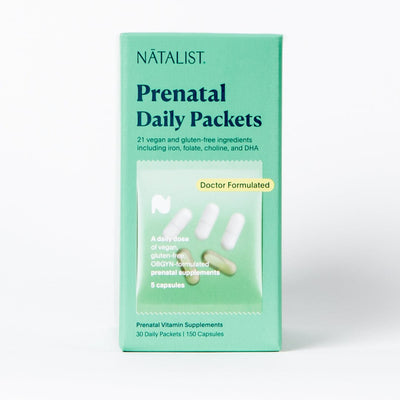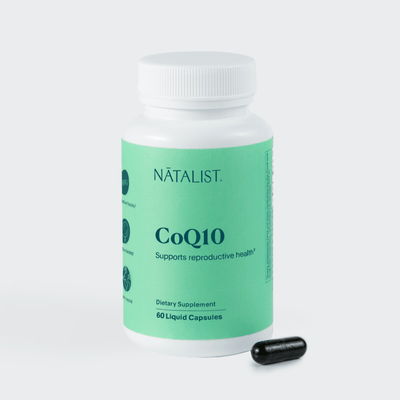Stillbirth vs. Miscarriage: What's the Difference?

By OBGYN Dr. Kenosha Gleaton
In this article we will be discussing sensitive topics involving pregnancy loss, including the differences and similarities between miscarriage and stillbirth.
What Is a Miscarriage?
Here is an overview of miscarriage, including causes, symptoms, treatment options, and recovery.
Definition and Timing
A miscarriage or spontaneous abortion is the loss of a baby before the 20th week of pregnancy. [1] Miscarriage is considered the most common form of pregnancy loss and impacts as many as 26% of all pregnancies, or up to 10% of clinically recognized pregnancies. [1]
Common Causes
Miscarriages in the first trimester are caused by chromosomal abnormalities about 50% of the time. [2] Chromosomal abnormalities occur when an egg or sperm has more or less chromosomes than normal, which often happens by chance. Maternal health conditions such as uncontrolled diabetes, infections, and uterus or cervix problems can also lead to a miscarriage. [2]
Symptoms and Diagnosis
Miscarriages most often occur before the 12th week of pregnancy. Some potential signs and symptoms include [2]:
- Vaginal spotting or bleeding
- Pain or cramping in the abdomen or lower back
- Tissue or fluid passing from the vagina
In order for your healthcare provider to diagnose a miscarriage, they may conduct a few different exams. A pelvic exam, ultrasound, blood tests, tissue tests, and chromosomal tests can all help to identify a miscarriage. [2] There are various diagnoses that range from a threatened miscarriage (bleeding without a dilated cervix) to a septic miscarriage (a severe infection that develops as a result of the miscarriage). [2]
Treatment and Recovery
There are a few different options for miscarriage management that can vary depending on your diagnosis. Expectant management is a method that allows the miscarriage to progress naturally. Your healthcare provider will ensure you have no signs of infection and will ensure that the expulsion of the embryo occurs on its own. [2]
In some cases, additional medication or intervention will be needed. If someone chooses to speed up the process after learning of their miscarriage, they may opt for medical treatment. Medications can be inserted in the vagina or taken by mouth in order to expel any pregnancy tissue. In a majority of people, these medications will work within 24 hours. [2]
The last option for miscarriage management is surgical treatment, known as suction dilation and curettage (D&C). To perform a D&C, your healthcare provider will dilate the cervix and remove tissue from the inside of the uterus. Surgical treatment may be needed if there are signs of an infection, complication, heavy bleeding, etc. [2]
In many cases, recovering from a miscarriage will only take a few hours to a few days. If you experience any heavy bleeding, fever, or pain, you should reach out to a healthcare provider.
What Is a Stillbirth?
Here is an overview of stillbirths, including causes, symptoms, treatment options, and recovery.
Definition and Timing
A stillbirth is the loss of a baby at 20 weeks of pregnancy or later. [3] In the United States, stillbirths are estimated to impact approximately 0.5% to 1% of all pregnancies, or about 21,000-24,000 babies every year. [3-4]
Classification of Stillbirths
Stillbirths are classified as either early, late, or term. An early stillbirth refers to a fetal death that occurs between weeks 20 and 27 of pregnancy. [4] A late stillbirth occurs between weeks 28 and 36. A term stillbirth occurs between 37 or more weeks of pregnancy. [4]
Common Causes
Truthfully, we aren’t always sure what causes stillbirth. There are many factors that can contribute to a stillbirth, some are in our control and others are not. Research shows that some of the most common causes of stillbirth are pregnancy and labor complications, problems with the placenta, infection, and birth defects. [5] Someone may also be at a higher risk of a stillbirth if they have experienced high levels of stress or use certain drugs during pregnancy. [5]
Symptoms and Diagnosis
Everyone can experience symptoms differently. Most often, those who are experiencing a stillbirth will notice the following [6]:
- Fetal movement or kicking stops
- Bleeding or spotting
A healthcare provider will be able to diagnose a stillbirth if no fetal heartbeat or movement can be detected with the appropriate equipment.
Treatment and Next Steps
When a baby does pass away before delivery and is considered stillborn, there are a few options for delivery. [7] Generally healthcare providers will recommend induced labor, which can be done using a tablet or gel inserted in the vagina, swallowing a tablet, an IV drip, or a foley bulb which is a way to widen the cervix. [7] The other options for delivery include a cesarean section or natural birth. A cesarean section is not always recommended as it’s more invasive and less safe than a natural birth or induced labor. [7] A natural birth requires waiting for birth to happen on its own without the use of any medication or intervention. Factors such as the number of weeks gestation, size of the fetus, and time passed since the heartbeat stopped will all impact the best course of action. [7]
Comparing and Contrasting Stillbirth vs. Miscarriage
Stillbirth and miscarriage both describe pregnancy loss but differ according to when the loss occurs. There are also differences in some symptoms, treatments, and diagnostic methods.
Key Differences
The defining difference between a stillbirth and a miscarriage is the time at which the pregnancy is lost. If the loss occurs before 20 weeks gestation, it is considered a miscarriage. If the loss occurs at 20 weeks or later, it is considered a stillbirth. [3] Miscarriages are more common than stillbirths and are caused by a chromosomal abnormality in about 50% of cases, while stillbirths are most often caused by pregnancy or labor complications. [2,5] Treating and diagnosing stillbirths and miscarriages can also vary depending on weeks of gestation, infection risk, and other factors.
Shared Experiences
No matter when a loss of pregnancy happens, it can be incredibly difficult to experience. The shared experiences of the families going through either a stillbirth or miscarriage can be similar in many ways. No matter how far along someone is, there is often an expectation of a healthy delivery and the ability to one day bring a baby home. It’s important that those experiencing a loss find the support they need through social circles, counseling, support groups, etc. It’s also important to keep in mind that grief looks different for everyone.
Mental Health and Future Fertility
How does pregnancy loss impact future fertility? The cause of pregnancy loss, as well as other factors like age, health conditions, male fertility, etc. can all impact someone’s chances of conceiving again or delivering a healthy baby. It is true that on average, those who have a stillbirth are more likely to have another. [8] Nonetheless, many who have experienced a stillbirth will go on to get pregnant again and deliver a live, healthy baby. As far as when to try and conceive again, many healthcare providers recommend waiting at least three to six months. [9] While findings don’t show any risk of pregnancy complications in those who conceive earlier than this, getting pregnant again very quickly may have poor mental health outcomes.
The outlook is fairly similar for those who have experienced a miscarriage. Recurrent miscarriages only appear in about one percent of people assigned female at birth. If someone does experience more than one miscarriage, the risk of recurrence increases. [10] That being said, it’s often possible (though not necessarily recommended) for someone to get pregnant again as soon as two weeks after a miscarriage. Similarly to those who have experienced a stillbirth, it may be beneficial to allow time to process and heal from the pregnancy loss before attempting to conceive again. Healthcare providers should always be consulted when considering TTC. [10]
Natalist: Supporting Your Throughout Your Pregnancy Journey
Unfortunately there are many things that are out of our control, including some of the causes of pregnancy loss. While we may be unable to impact the chance of birth defects, chromosomal abnormalities, pregnancy complications, and more, we can take some steps to prioritize a healthy pregnancy and prenatal routine. Make sure you are visiting your healthcare provider for regular checkups and always follow any recommended changes to your diet and lifestyle. Most healthcare providers recommended taking a prenatal multivitamin to provide your body with all the nutrients needed for a healthy pregnancy on top of eating a balanced diet, getting regular exercise, and stopping unhealthy substances. [11] Shop all Natalist products here.
References:
- Dugas C, Slane VH. Miscarriage. [Updated 2022 Jun 27]. In: StatPearls [Internet]. Treasure Island (FL): StatPearls Publishing; 2023 Jan-. Available from: https://www.ncbi.nlm.nih.gov/books/NBK532992/
- Miscarriage. Mayo Clinic. October 2021. URL.
- Pregnancy and Infant Loss. Centers for Disease Control and Prevention. September 2022. URL.
- What is Stillbirth? Centers for Disease Control and Prevention. September 2022. URL
- What are possible causes of stillbirth? NIH Office of Communications. October 2022. URL.
- Stillbirth. Stanford Medicine. Accessed August 2023. URL.
- Stillbirth. Cleveland Clinic. August 2020. URL.
- Other Stillbirth FAQs. NIH Office of Communications. June 2023. URL.
- Trying to conceive soon after a pregnancy loss may increase chances of live birth. NIH News Release. January 2016. URL.
- Pregnancy after miscarriage: What you need to know. Mayo Clinic. October 2021. URL.
- Good Health Before Pregnancy: Prepregnancy Care. ACOG. FAQ 056. December 2021. URL.
Related Blogs
Sign up for 15% off your first order!
Insider access, exclusive deals, and OBGYN insights!
Reach Out, We're Here
Have questions about your order or products? For the speediest answer, check out our FAQ section. Need something else? Come find us below.
Customer Support
support@natalist.com
Press Inquiries
media@everlyhealth.com
Business & Partnerships
team@natalist.com
Affiliates + Influencers
team@natalist.com
Job Openings
Careers Page


















